Washing fruits and vegetables with plain water helps in removing about 80% of pesticide residue, bacteria and other disease-causing germs. In this article, we discuss proper way of washing fruits and vegetables at home.
We all know that fruits and vegetables are good for our health and we should eat plenty of them. They not only provide vitamins, minerals, and antioxidants but are also an important source of dietary fibre. Therefore, they are an indispensable component of any healthy diet.
At the same time, the consumption of contaminated fruits and vegetables can do more harm than good.
Why washing of fruits and vegetables is important?
The fruits and veggies we eat can get contaminated by various chemicals and germs from different sources. The common contaminants in fruits and vegetables are:
Pesticides, fertilizers, and other chemicals
During growth of fruits and vegetables, they are exposed to several harmful chemicals present in the soil or water used for irrigation and fertilizers or pesticides.
Pesticides and fertilizers also leach in the soil and contaminate groundwater, which is absorbed by plants for making food. Thus, these chemicals get incorporated in the plant. Pesticides sprayed on the plants also remain on the surface of fruits and vegetables as residue.
When these plants or their products are consumed, these chemicals enter the food chain. Gradually, they are accumulated in our bodies.
In current times, almost no food is 100 percent free from chemicals. Even organic produce may contain some pesticide residues that are different from those in conventional farming.
Harmful effects of pesticides are increased risk for chronic diseases like cancers, Alzheimer’s disease, Parkinsonism, diabetes, birth defects, attention deficit disorder, and autism.
After harvesting, wax and other chemicals are used to hasten or suppress ripening and to enhance the looks of fruits and veggies.
Contamination with germs
The fruits and vegetables can also be a potential vehicle for transmission of various germs. It is a very common occurrence as evident from the number of cases of foodborne diseases such as diarrhoea, cholera, typhoid, etc. every year.
Contaminated soil or water (including sewage water used for irrigation in many places), poor hygiene of growers, sellers, and users can be a possible source of pathogens. Contamination can also occur during the preparation or storage of food.
Can fruits and vegetables cause corona infection?
In the shadow of corona virus pandemic, everybody is scared, wondering if fruits, and vegetables can be a potential source of the infection?
Evidence until now suggests that novel corona virus is not transmissible by food.
Viruses are not capable of multiplying outside a host and so is the corona virus. But they can survive on a surface for varying periods depending on temperature, humidity, and type of surface.
So, your grocery, fruits, and vegetables can get contaminated if a person infected with corona virus is standing near or handling them coughs or sneezes over them. Droplets can settle on the surface of fruits/vegetables, floors, or anything around. The virus is transmitted from one person to another by inhalation of droplets or by touching the contaminated items.
Therefore one needs to take extra precautions and care while grocery shopping, handling, and storing these items, as prevention is always better than cure.
What should we do to protect ourselves from harmful chemicals and infecting organisms? Do we need to stop eating fruits and vegetables?
The answer is that we do not need to stop eating fruits and veggies, instead, we need more of them to boost our immune system, but we need to make sure that they are not contaminated.
One can go for organic produce, considering the availability and affordability. But there are still chances of pesticide exposure due to cross-contamination from neighboring farms, presence of pesticides in the soil from previous use, permitted use of certain pesticides in organic farming, and accidental or fraudulent use.
However, there is consensus in the scientific community that the health benefits of consuming fruits and vegetables outweigh any potential risks from traces of pesticide residues. In addition, we can easily reduce the risk from the surface residue by properly washing our fruits and vegetables.
How to wash fruits and vegetables properly?
We can use the following tips to harness the goodness of fruits and vegetables while keeping ourselves safe from unwanted chemicals and germs.
- First, do not purchase damaged, bruised or decayed fruits and vegetables.
- Always consider fruits and vegetables brought from outside as potentially contaminated. Do not place them directly on the kitchen counter.
- Wash all the fruits and vegetables before consumption, whether it is homegrown or market brought, organic, or inorganic.
- It is still important to wash produce even if you do not plan to eat the skin. So that dirt and bacteria from the surface are not transferred while peeling or cutting the produce.
- Wash hands with soap and water before washing fruits and vegetables. It ensures that no microbes are transferred from your hands to produce.
- Wash fruits and vegetables as soon as you bring them (except delicate ones like berries and mushrooms as washing them far ahead of eating, may accelerate spoilage due to exposure to moisture). Longer the pesticides or other chemicals sit on produce, the deeper they will penetrate, and it will be harder to remove them.
- Remove the outer leaves of cauliflowers, cabbage, wilted leaves, and roots of green leafy vegetables if they are attached. Cutaway any damaged area.
- First rinse vegetables or fruits with water to remove visible soil attached to them. It is more common with loose produce than pre-packaged ones, otherwise, skip this step.
- Washing with water alone can remove about 75-80 percent of chemicals and germs from produce.
One can opt for washing under running water or soaking in water.- Washing under running water for 30 seconds is effective to remove most chemicals, dirt, and germs.
- I prefer soaking. It covers all the areas around especially for vegetables like cauliflower, broccoli, green leaves, and saves water too.
Take a container large enough to accommodate your produce. The use of kitchen sink after a thorough cleaning also seems practical but there are chances of contamination from the drain of the sink, so it is better to avoid it.
Fill the container with warm potable (drinking) water and let your fruits and veggies sit in it for 15 – 20 minutes.
Do not use hot water as it makes the produce wilt.
Alternatively, cold water can also be used. But take care, water should not be more than 10 degrees centigrade colder than the produce.
- After soaking gently, rub the fruits and vegetables all around. You can also use a soft-bristled brush to clean the surface of tough produce like melons, potatoes, cucumber, carrots, etc.
- Now rinse with plain water. The action of rubbing, friction, and heat removes most of the chemicals and kills germs.
- Dry the produce with a clean cloth or paper towel or let them sit in a colander for some time. Storing the produce without drying is not recommended as moisture favors the growth of microorganisms.
- Store the fruits and vegetables which get easily spoiled in the refrigerator.
- Keep all the surfaces that come in contact with fruits and vegetables like the sink, the vessel for soaking, kitchen counter, cutting board, knives, dishes, and utensils clean at all times. If possible, use separate knives and cutting boards for animal foods like meat, chicken, and fish.
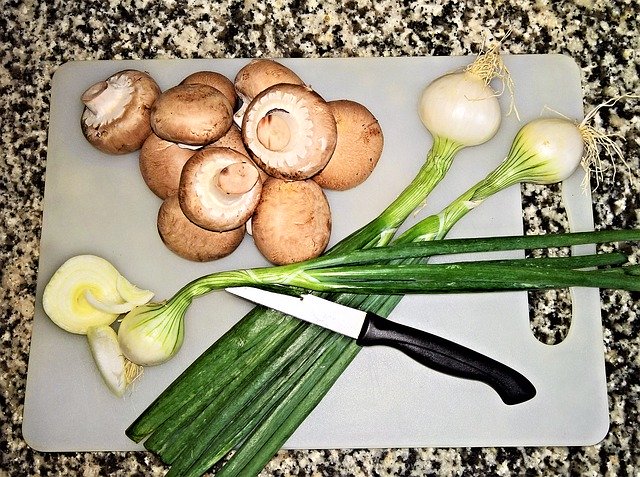
Homemade fruit and vegetable soak:
If you are overly concerned and want to take extra precautions then you can go for any one of the following household methods for soaking.Please note that no cleaning method is 100% effective for removing all pesticide residues and killing all the germs.
Sodium bicarbonate or baking soda
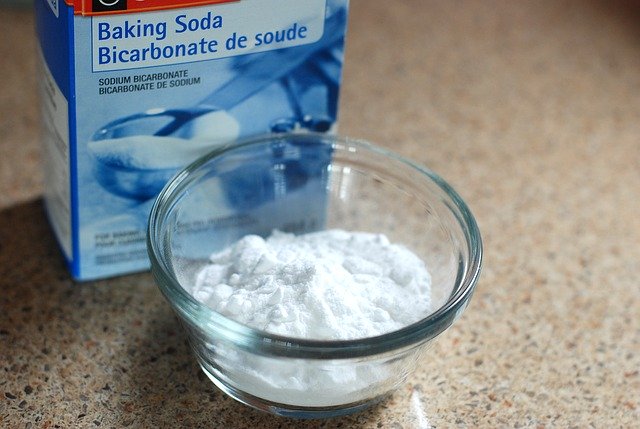
Weak solution of Baking soda (also known as meetha soda) solution prepared by mixing one teaspoon of baking soda (about 5 grams) in 2 cups (about half liter) of water is very effective will remove about 90 percent of chemical residue.
Soak produce in the solution and move around with hand. Let it sit for 12 to 15 minutes.
Note that Baking soda is different from baking powder. Baking soda is pure sodium bicarbonate, while baking powder contains other acidifying agents along with sodium bicarbonate.
A study on the effectiveness of different commercial and homemade washing agents on removing pesticide residue from apples also reported that washing with baking soda was more effective in removing the surface residue of pesticides.
Salt
You can also add salt to water used for soaking.
A concentration of 2 percent is effective though higher concentrations like 10 percent are slightly more effective. For a 2 percent strength simply mix 20 grams (4 teaspoons) of salt in 1 liter of water.
Salt makes the solution hypertonic and causes water to move out from bacterial cells resulting in dehydration and death of bacteria. It also breaks down the pesticide residues present on the surface.
White vinegar
White vinegar having a strength of 5 percent acetic acid is effective in killing germs.
But that is the usually available strength of vinegar in the market. Soak the produce in vinegar having a strength of 5 percent acetic acid for 20 minutes and then rinse with plain water.
But this method is a little impractical due to the quantity and cost of vinegar required. Diluting with water will weaken the bactericidal action of the vinegar. It will also leave a smell and taste of vinegar.
However using a little is better than not using it at all. So one may use 1/4th cup white vinegar and 1 teaspoon of salt in one cup of water.
Lemon water
Lemon contains citric acid, a weak organic acid that kills germs. Mix 1 cup of lemon juice, in approximately 1 litre of water (ratio of 1 part lemon juice in 4 parts of water), and soak for 5 mins. For berries and other delicate produce, spraying is better than soaking. Later rinse with plain water.
Potassium permanganate
Potassium permanganate also effectively removes a variety of chemical residues from fruits and vegetables. Regarding germs, it is more effective against bacteria (like typhoid, cholera, etc), parasites, and worms than viruses. It is great for preventing foodborne diseases, especially during the rainy season.
Prepare a very dilute solution of potassium permanganate. Add a few crystals of potassium permanganate in a liter of water so that the solution is just faint light pink or pink-tinted. If you end up with a dark pink solution, probably you have added too many crystals and need to dilute the solution further with water.
Soak vegetables in it for 10 minutes. After that rinse, multiple times with plain water. Be careful about the strength of the solution you are using. Ingestion of large quantities of potassium permanganate can cause throat burn, nausea, vomiting, diarrhea, and abdominal pain. However, the amount left after treating with the weak solution and rinsing multiple times with plain water would not be large enough to induce these effects.
Homemade fruit and vegetable spray:
For preparing an instant fruit or vegetable spray- take 2 cups of water, 2 tablespoons of lemon juice, and 2 tablespoons of baking powder. Mix all the ingredients in a bowl. There will be effervescence (foam) initially which will settle down soon. Mix well. Fill it in a spray bottle. Your homemade fruit and vegetable wash is ready. Shake it well before use. Spray a couple of times on the produce, let it sit for 5 minutes, rub all around and rinse with water.
Special considerations:
- Fruits and veggies with crevices/ grooves
Pay special attention while washing fruits like grapes, apples, guava, plums, mangoes, peaches and pears and vegetables like tomatoes, bell pepper, brinjal (eggplant), and okra as they may carry more germs and pesticide residue in their crevices. So wash them multiple times paying particular attention to cervices.
- Green leafy vegetables
Leafy greens like spinach, cabbage, coriander, spring onion, mustard, cilantro, mustard, lettuce, etc also need special attention because they grow near the ground and can get contaminated easily. Their large surface area increases the amount of residue they carry.
Chop the roots if still attached, remove outer and wilted leaves before washing. Wash multiple times in plenty of water in a large container until there is no visible dirt.
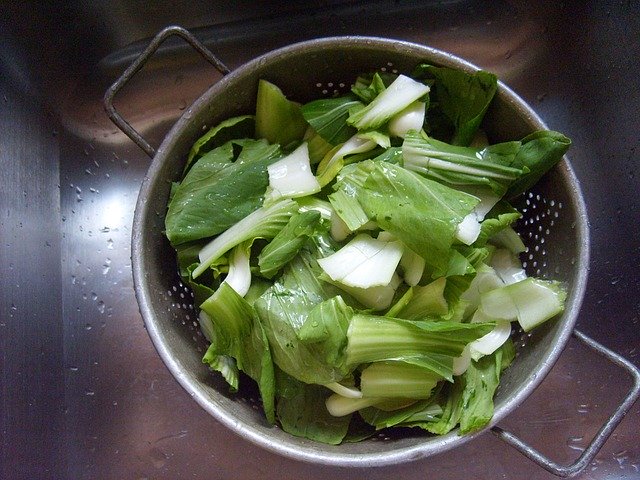
Then lift the leaves out of the water, shake them gently, and put into a colander to drain.
Don’t overturn the bowl of dirty water directly into the colander, as dirt and debris settled at the bottom of water may again get caught in between your leaves.
- Delicate produce like berries, mushrooms
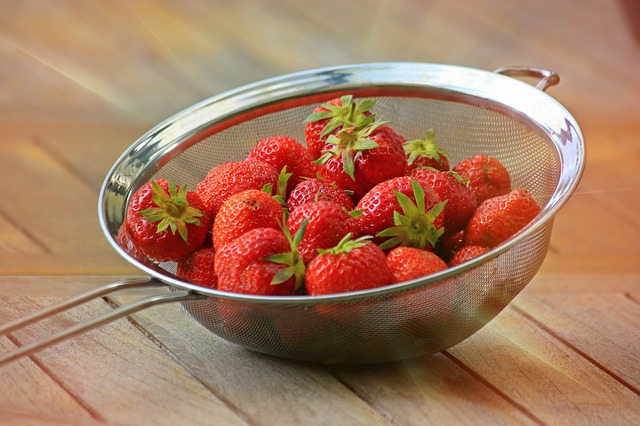
For delicate produce like berries and mushrooms, check and discard any spoiled and moldy pieces. Store them in the refrigerator before use.
Rinse them underwater in a colander or spray with water or a lemon juice solution just before use. Avoid soaking them. After washing dry them immediately by wiping with a microfiber cloth/paper towel.
Don’t
- Use of detergents/ dish wash or any kind of soap is not recommended
- Never use a bleach solution to wash fruits/ vegetables.
- Fruits and vegetables have pores in them. While washing with soap or bleach, they may get trapped or absorbed in these pores. So they can add to the residue already present on the surface of the produce and can result in nausea, vomiting, and an upset stomach.
- The use of commercial fruit or vegetable washes is also not encouraged because they are not tested or standardized and the safety of the residue from the wash is questionable.
Take away
Despite the risk associated with eating contaminated fruits and veggies, the health benefits of eating fresh fruits and vegetables are indispensable.
The risk of infection from handling loose vegetables or fruits is small as long as good hygienic practices are followed.
Thorough washing of fruits and vegetables with water is enough to remove most germs and harmful chemicals rendering it safe for human consumption.
Efficacy of decontamination can be enhanced by using commonly available household agents like baking soda, salt, lemon juice, vinegar, or potassium permanganate. If you don’t have them, just wash, wash, and wash fruits and vegetables before eating.
I hope you found this blog post useful.
What other ideas can you add to this list?
I look forward to hearing from you!!!

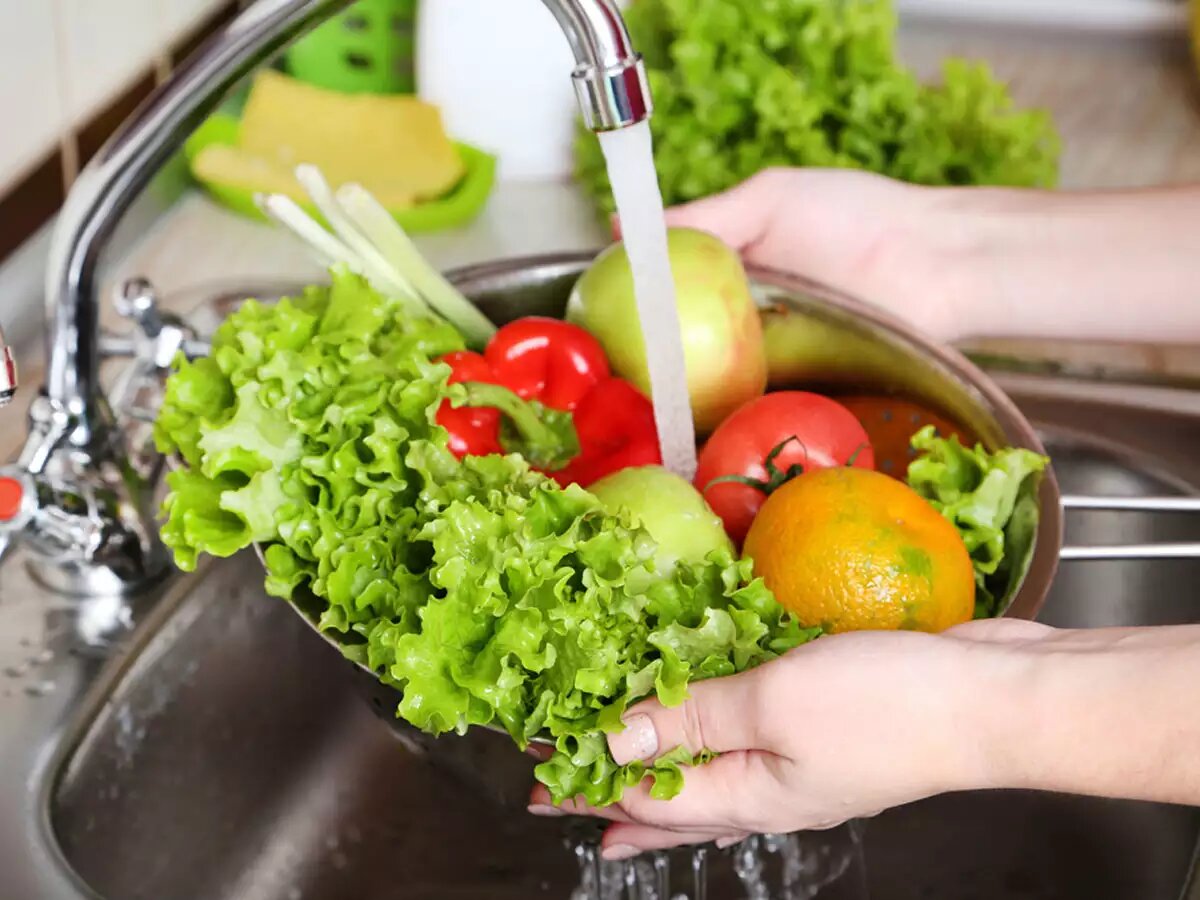
Hey there. I found your website via Google even as searching for a comparable topic, your web site came up. It seems good. I have bookmarked it in my google bookmarks to come back then. Dorree Ricardo Creath
I am regular visitor, how are you everybody? This piece of writing posted at this web page is in fact nice. Idalia Flynn Martineau
Good post! We are linking to this great article on our site. Keep up the great writing. Aida Levey Albric
Wow! Thank you! I constantly wanted to write on my website something like that. Can I implement a part of your post to my site? Faustina Romeo Cato
Major thanks for the blog post.Much thanks again. Want more.